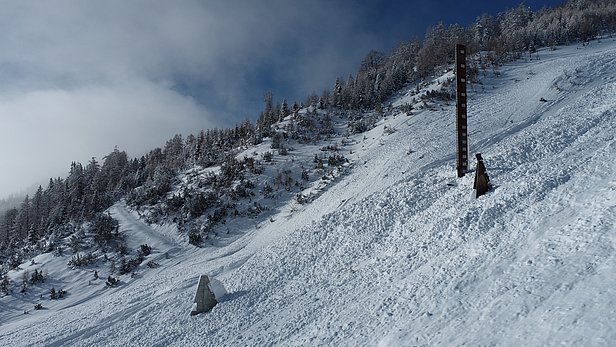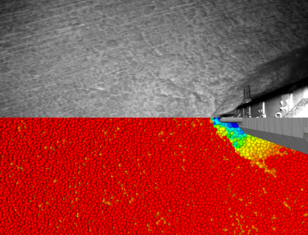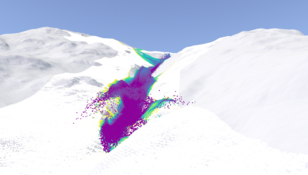
Avalanche dynamics – How avalanches move ¶
Understanding the flow properties of avalanches is important for determining potential danger zones and planning protective measures. To protect the community from this powerful natural process, we study avalanches in full-scale and develop numerical models to predict their behavior.
Content ¶
The destructive power that a snow avalanche develops as it moves down the slope and the point in its path where it stops are critical factors in hazard assessment and planning of protective measures. The movement of a powder snow avalanche is different from that of a dense snow avalanche, and the mechanisms that control interaction with structures and govern avalanche stopping are complex and varied. In fact, while the flow of dense snow avalanches is dominated by the collision of millions of granules, their fragmentation and reconsolidation, and the melting of the sliding surface, powder snow avalanches are characterized by a suspension of particles surrounding a denser layer, where turbulent motion and air entrainment play a key role. The properties of the snow along the path determine whether the avalanche will become dense or powder, and the nature of the terrain is also a key factor.
Flow behavior experiments in full-scale ¶
To understand which processes predominate in different types of flow, we conduct experiments using real avalanches. Our test site is located at the Vallée de la Sionne, in Arbaz, Canton Valais. During the avalanche descent, more than 200 sensors measure parameters such as the velocity and impact pressure within the flow. To get a complete picture of the avalanche, we also perform measurements using modern remote sensing techniques such as radars and drones.
Modelling snow avalanches ¶
The acquired know-how and collected data are used to develop avalanche dynamics models to study the interaction between avalanches and man-made structures or as a basis for calculating avalanche hazard maps and danger scenarios. As such, we support the development of practical computational tools such as the RAMMS model by providing calibration data and basic knowhow, and we develop and test new computational methodologies to continuously improve our products.


